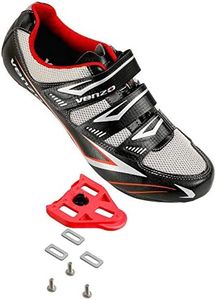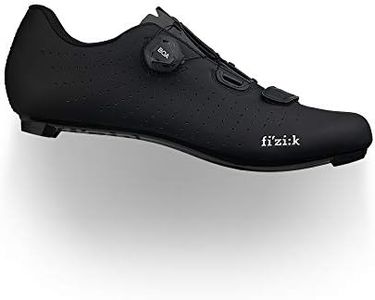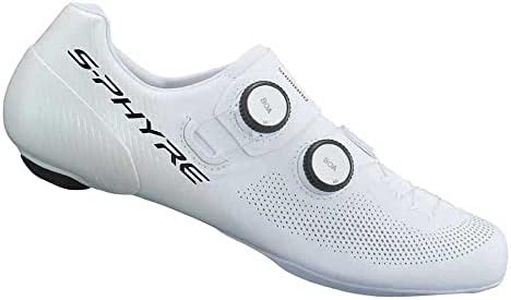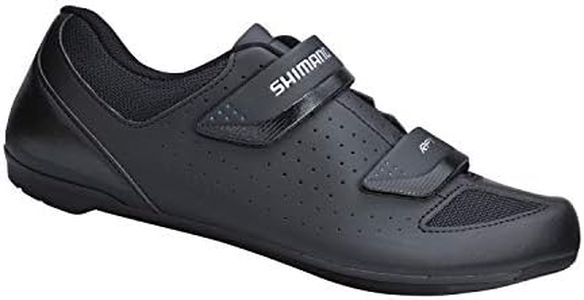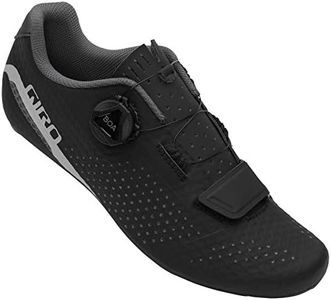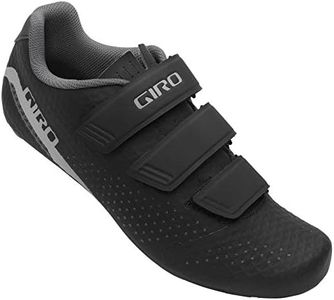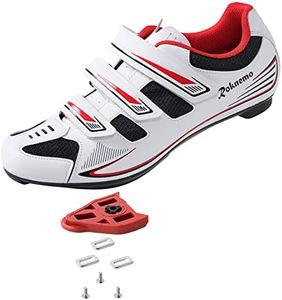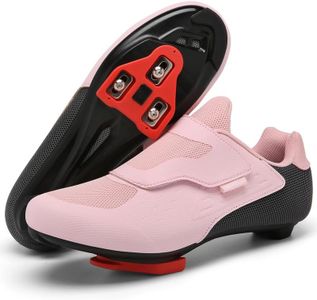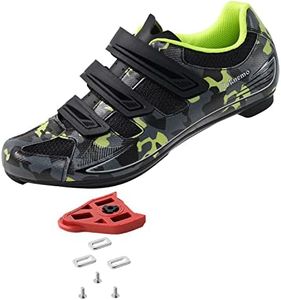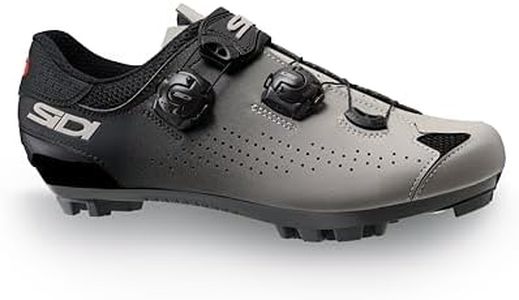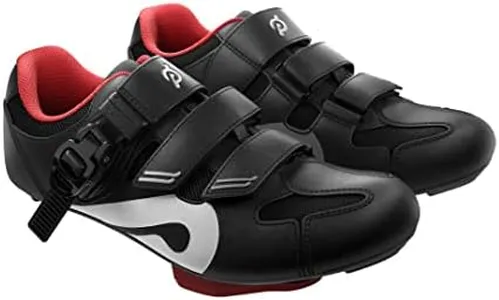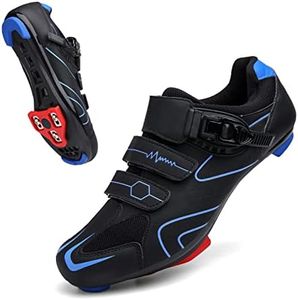We Use CookiesWe use cookies to enhance the security, performance,
functionality and for analytical and promotional activities. By continuing to browse this site you
are agreeing to our privacy policy
10 Best Road Bike Shoes
From leading brands and best sellers available on the web.By clicking on a link to a third party's website, log data is shared with that third party.
Buying Guide for the Best Road Bike Shoes
Choosing the right road bike shoes can make a huge difference in your cycling comfort, efficiency, and enjoyment. The best shoes for you will depend on how you plan to ride, the type of pedals you use, and how much emphasis you place on things like weight, stiffness, and walkability. By understanding the key features of road bike shoes, you can focus on what's most important for your cycling needs and avoid paying for features you don't really need.Sole StiffnessSole stiffness refers to how rigid the shoe's base is. A stiffer sole means better power transfer from your legs to the pedals, which is especially important if you're racing or training seriously. Stiff soles are commonly made from carbon fiber, while more flexible soles may include nylon or composite materials. If you ride long distances, value maximum efficiency, or want to go faster, a stiffer sole is beneficial. For newer riders or those who value comfort and plan to do a little walking, a less stiff sole might be a better fit.
Closure SystemThe closure system is how your shoes tighten and secure around your foot. Common types include Velcro straps, ratcheting buckles, dials (like BOA), or a combination. Dials and buckles allow for more precise adjustments, which is great for performance and comfort during long rides. Velcro is simple and lightweight but may not give as snug a fit. Your choice should be guided by how much adjustability and quickness you want when putting on or taking off the shoes.
Cleat CompatibilityCleat compatibility means the type of pedal system the shoe works with. Most road bike shoes use a three-bolt pattern, suitable for traditional road pedals. Some also accept two-bolt cleats, usually for mountain or touring pedals. If you already have pedals, check what cleat pattern they require. If you often walk in your bike shoes, consider shoes compatible with two-bolt systems, as these are generally easier for walking.
Fit and WidthFit and width are about how the shoe matches the shape and size of your foot. A proper fit means your foot is secure without being pinched, and there's enough room for your toes. Some brands offer wide options for people with broader feet. If your shoes are too loose, you'll lose efficiency. If they're too tight, you'll feel discomfort or numbness. Always try shoes on (or check return policies) and pay attention to any 'narrow' or 'wide' designations depending on your foot shape.
Ventilation and MaterialsVentilation describes how much air can flow through the shoe, which impacts how cool and dry your feet stay on the bike. Shoes with more mesh panels will be cooler, while those with less ventilation may be better for colder weather. Materials also affect weight and durability. Lightweight and well-ventilated shoes are best for warm climates or long rides, while those with less mesh work for cool riding and offer more protection in wet conditions. Match ventilation and materials to your typical riding climate and how much you value lightweight gear.
Heel and Arch SupportHeel and arch support influence your comfort and pedaling efficiency over long periods. Some shoes have shaped insoles or additional support for the arch and heel, which is helpful if you plan to ride for hours at a time or if you have a high arch. If you know you need extra support based on past foot discomfort, look for shoes with replaceable insoles or features designed for better support. Otherwise, standard support works for most people.
